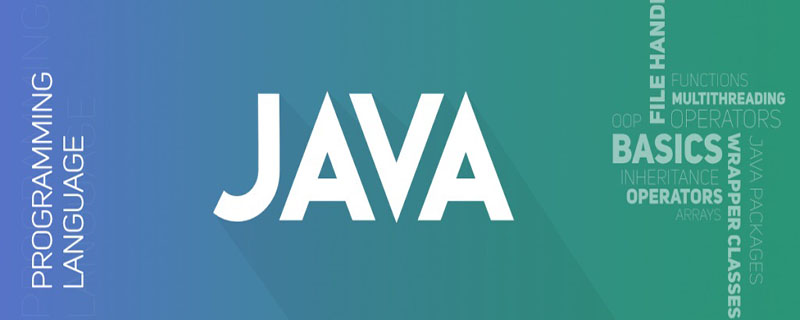Java lastIndexOf principle analysis

lastIndexOf returns its position in the string according to the search conditions. Spaces are also counted. If there is no such character in the string, -1 is returned.
There are four main methods:
lastIndexOf(int ch), which returns the last occurrence of the specified character in this string. index.
lastIndexOf(int ch , int fromIndex) , returns the index of the last occurrence of the specified character in this string, and starts a reverse search from the specified index.
lastIndexOf(String str), returns the index of the rightmost occurrence of the specified substring in this string.
lastIndexOf(String str , int fromIndex), returns the index of the last occurrence of the specified substring in this string, and starts the reverse search from the specified index.
Parameters
ch -- Characters.
fromIndex -- The index position to start the search.
#str -- The substring to search for.
Return value
The index value of the first occurrence of the specified substring in the string.
Example:
String str = "01234567890123456789";
//查找字符串“01234567890123456789”中字符‘8'所在的位置(索引从0开始,从前往后搜索)
System.out.println(str.lastIndexOf('8')); //18
//查找字符串“01234567890123456789”中字符‘8'所在的位置,从索引为9的位置,即“0123456789”,从后往前搜索。
System.out.println(str.lastIndexOf('8',9)); //8
//查找字符串“01234567890123456789”中字符串‘56'所在的位置(索引从0开始,从前往后搜索),返回的是“56”中“5”的位置。
System.out.println(str.lastIndexOf("56")); //15
//查找字符串“01234567890123456789”中字符‘8'所在的位置,从索引为9的位置,即“0123456789”,从后往前搜索,返回的是“56”中“5”的位置。
System.out.println(str.lastIndexOf("56",9)); //5Note: System.out.println(str.lastIndexOf("56",5)) In this example, it stands to reason that in "012345 "56" cannot be found, but the returned value is not -1, but 5.
After testing, when searching for a string, only the subscript of the first character in the matched string is returned. So even if you set the value of fromIndex to "5", you can match "567890123456789", and the return value is also 5.
Similar example:
String str1 = "Hello World!";
System.out.println(str1.lastIndexOf('o')); //7
System.out.println(str1.lastIndexOf("o ",4)); //4
System.out.println(str1.lastIndexOf("o World",4)); //4Recommended tutorial: "Java Tutorial"
The above is the detailed content of Java lastIndexOf principle analysis. For more information, please follow other related articles on the PHP Chinese website!

Hot AI Tools

Undresser.AI Undress
AI-powered app for creating realistic nude photos

AI Clothes Remover
Online AI tool for removing clothes from photos.

Undress AI Tool
Undress images for free

Clothoff.io
AI clothes remover

AI Hentai Generator
Generate AI Hentai for free.

Hot Article

Hot Tools

Notepad++7.3.1
Easy-to-use and free code editor

SublimeText3 Chinese version
Chinese version, very easy to use

Zend Studio 13.0.1
Powerful PHP integrated development environment

Dreamweaver CS6
Visual web development tools

SublimeText3 Mac version
God-level code editing software (SublimeText3)

Hot Topics
 1385
1385
 52
52
 Perfect Number in Java
Aug 30, 2024 pm 04:28 PM
Perfect Number in Java
Aug 30, 2024 pm 04:28 PM
Guide to Perfect Number in Java. Here we discuss the Definition, How to check Perfect number in Java?, examples with code implementation.
 Weka in Java
Aug 30, 2024 pm 04:28 PM
Weka in Java
Aug 30, 2024 pm 04:28 PM
Guide to Weka in Java. Here we discuss the Introduction, how to use weka java, the type of platform, and advantages with examples.
 Smith Number in Java
Aug 30, 2024 pm 04:28 PM
Smith Number in Java
Aug 30, 2024 pm 04:28 PM
Guide to Smith Number in Java. Here we discuss the Definition, How to check smith number in Java? example with code implementation.
 Java Spring Interview Questions
Aug 30, 2024 pm 04:29 PM
Java Spring Interview Questions
Aug 30, 2024 pm 04:29 PM
In this article, we have kept the most asked Java Spring Interview Questions with their detailed answers. So that you can crack the interview.
 Break or return from Java 8 stream forEach?
Feb 07, 2025 pm 12:09 PM
Break or return from Java 8 stream forEach?
Feb 07, 2025 pm 12:09 PM
Java 8 introduces the Stream API, providing a powerful and expressive way to process data collections. However, a common question when using Stream is: How to break or return from a forEach operation? Traditional loops allow for early interruption or return, but Stream's forEach method does not directly support this method. This article will explain the reasons and explore alternative methods for implementing premature termination in Stream processing systems. Further reading: Java Stream API improvements Understand Stream forEach The forEach method is a terminal operation that performs one operation on each element in the Stream. Its design intention is
 TimeStamp to Date in Java
Aug 30, 2024 pm 04:28 PM
TimeStamp to Date in Java
Aug 30, 2024 pm 04:28 PM
Guide to TimeStamp to Date in Java. Here we also discuss the introduction and how to convert timestamp to date in java along with examples.
 Java Program to Find the Volume of Capsule
Feb 07, 2025 am 11:37 AM
Java Program to Find the Volume of Capsule
Feb 07, 2025 am 11:37 AM
Capsules are three-dimensional geometric figures, composed of a cylinder and a hemisphere at both ends. The volume of the capsule can be calculated by adding the volume of the cylinder and the volume of the hemisphere at both ends. This tutorial will discuss how to calculate the volume of a given capsule in Java using different methods. Capsule volume formula The formula for capsule volume is as follows: Capsule volume = Cylindrical volume Volume Two hemisphere volume in, r: The radius of the hemisphere. h: The height of the cylinder (excluding the hemisphere). Example 1 enter Radius = 5 units Height = 10 units Output Volume = 1570.8 cubic units explain Calculate volume using formula: Volume = π × r2 × h (4
 How to Run Your First Spring Boot Application in Spring Tool Suite?
Feb 07, 2025 pm 12:11 PM
How to Run Your First Spring Boot Application in Spring Tool Suite?
Feb 07, 2025 pm 12:11 PM
Spring Boot simplifies the creation of robust, scalable, and production-ready Java applications, revolutionizing Java development. Its "convention over configuration" approach, inherent to the Spring ecosystem, minimizes manual setup, allo




